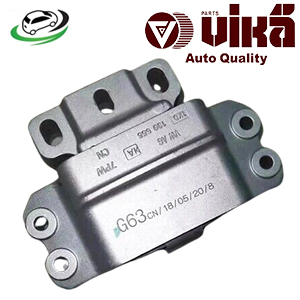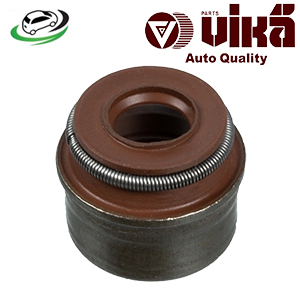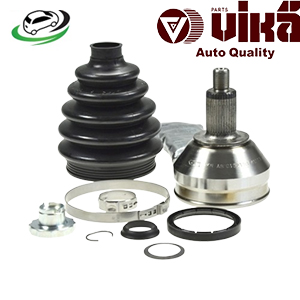-15%
Get Front Outer CV Joint Kit AUDI A1/A2 / VW Polo 1.2 TSI/1.4 TDI/1.4 16V/1.6/1.9 TD1 6Q0498099E
A Constant Velocity (CV) joint is a critical component in modern front-wheel-drive, all-wheel-drive, and some rear-wheel-drive vehicles. The outer CV joint, in particular, plays a vital role in transferring power from the transmission to the wheels while accommodating the up-and-down motion of the suspension and allowing the wheels to turn. An outer CV joint kit typically includes the CV joint itself, a protective boot, grease, and clamps. This comprehensive guide will explore the functionality, components, signs of failure, and maintenance of an outer CV joint kit.
Functionality of the Outer CV Joint
The primary function of the outer CV joint is to transmit torque from the vehicle’s transmission to the drive wheels at a constant speed, regardless of the angle of the steering or the motion of the suspension. This allows for smooth and efficient power delivery even when the vehicle is turning or going over bumps.
- Power Transfer: The CV joint ensures that power is transmitted evenly from the transmission to the wheels, providing consistent acceleration and driving performance.
- Flexibility: The joint accommodates the changes in angle as the wheels turn and move up and down with the suspension, maintaining smooth operation.
- Durability: Designed to handle the stresses of daily driving, the CV joint must withstand constant motion and varying forces.
Components of an Outer CV Joint Kit
An outer CV joint kit typically includes several key components:
- CV Joint: The core component that allows for the transfer of power while accommodating movement. It consists of a ball-and-cage design that permits a wide range of motion.
- Protective Boot: A rubber or silicone boot that encases the CV joint, protecting it from dirt, debris, and moisture. This boot is crucial for the longevity of the CV joint.
- Grease: High-quality grease is included to ensure the smooth operation of the CV joint, reducing friction and wear.
- Clamps: Metal clamps secure the protective boot in place, ensuring a tight seal to prevent contaminants from entering the joint.
Signs of a Failing Outer CV Joint
Recognizing the signs of a failing outer CV joint is crucial for maintaining vehicle safety and performance. Common symptoms include:
- Clicking Noises: A clicking or popping noise when turning, especially during sharp turns, is a common sign of a worn CV joint.
- Grease Leakage: If the protective boot is damaged, grease may leak out, leading to insufficient lubrication and potential joint failure.
- Vibration: Excessive vibration or shuddering during acceleration can indicate a problem with the CV joint.
- Boot Damage: Visible cracks or tears in the protective boot can allow contaminants to enter and damage the joint.
Maintenance and Replacement
Proper maintenance and timely replacement of the CV joint and its components are essential for the vehicle’s longevity and performance.
- Regular Inspections: Periodically check the CV boots for signs of damage, such as cracks or tears, and ensure that the clamps are secure.
- Listening for Noises: Pay attention to any unusual noises, particularly clicking sounds during turns, which may indicate a worn CV joint.
- Grease Replenishment: Ensure that the CV joint is adequately greased. If the boot is damaged and grease has leaked out, it should be replaced promptly.
Replacement Process
Replacing an outer CV joint typically involves the following steps:
- Lifting the Vehicle: Use a jack to lift the vehicle and secure it on jack stands for safety.
- Removing the Wheel: Remove the wheel to access the CV joint and axle.
- Disconnecting the Axle: Disconnect the axle from the transmission and the wheel hub.
- Removing the Old CV Joint: Carefully remove the old CV joint, taking care not to damage other components.
- Installing the New CV Joint: Install the new CV joint, ensuring it is properly greased and secured with the boot and clamps.
- Reassembling the Components: Reconnect the axle to the transmission and wheel hub, reinstall the wheel, and lower the vehicle.
Importance of Quality CV Joint Kits
Using high-quality CV joint kits is crucial for several reasons:
- Performance: Quality components ensure smooth and consistent power transfer, contributing to optimal vehicle performance.
- Durability: High-quality materials and construction enhance the longevity of the CV joint, reducing the frequency of replacements.
- Safety: Properly functioning CV joints are essential for safe driving, particularly during turns and over uneven surfaces.
- Cost-Effectiveness: Investing in quality components can prevent premature failures and costly repairs in the long run.
Follow us on Facebook for more parts.



